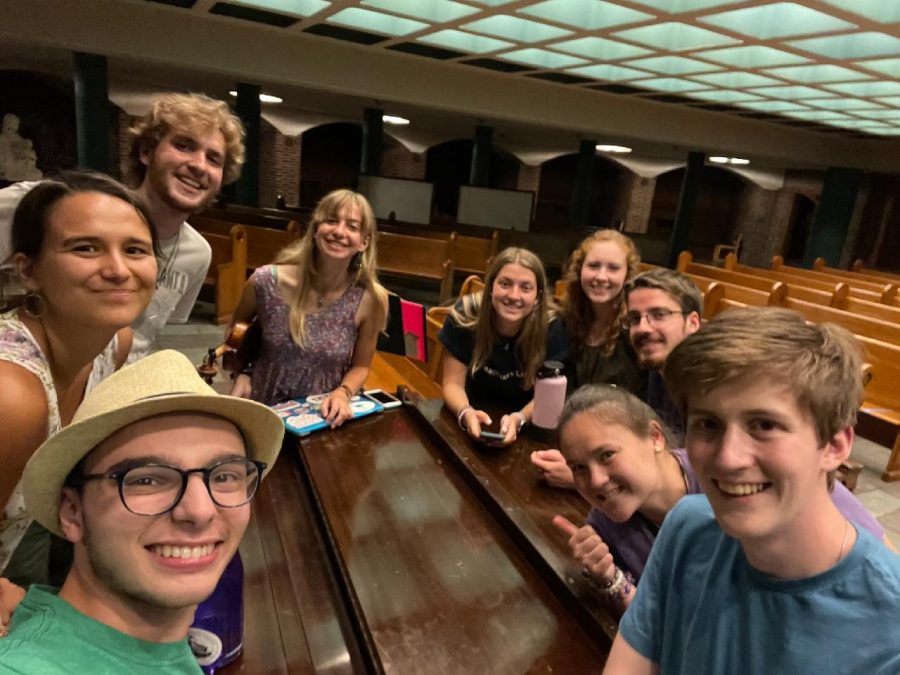To wear a mask, or not to wear a mask? That is the question
Students are getting back to their normal group activities, but will it last?
September 10, 2021
Yet the answer to the question is unanswerable. Wearing a mask has become a topic of such debate that not even the federal government can come up with effective guidelines. Instead, they pass the buck to state governments on the grounds that state governments can better determine their protocols based on the regional levels of COVID-19 outbreaks. This, while disconcerting, does make sense at this stage of the pandemic. However, the state governments also do not want to be responsible for making the wrong decision, so the buck is passed yet again to local governments which, often ill-equipped to make such important decisions, are unable to come up with effective guidelines and once again make masks someone else’s problem. This leaves local communities, college campuses, and small businesses at the forefront of a global issue. Some locations, heiring on the side of caution, have decided to bring back the mask regardless of vaccination status. Other places, favoring individual liberties for those who are vaccinated, have decided to not require masks. But, as students and staff of Saint Anselm College, where do we stand?
That is where the issue becomes even more muddied. The administration, favoring a hands-off policy when it comes to masks, has decided to allow the individuals in classrooms and common spaces to determine whether they want to require masks in that space at that given time. While this may indeed quell the validated fears of some more cautious members of our community, is it actually working to stop the spread of the virus?
At St. A’s, we have seen far fewer positive tests this year than in the year past. This is due in large part to the incredible efforts of the campus Health Services to test those who have reported symptoms and track their close contacts in the event of a positive test. The fact that positive cases are so few and far between can also be accounted for by our ever-increasing vaccinated population both on campus and in the wider community. I would argue that these factors alone are stopping the spread of the virus and keeping our community safe, as the mask policy on campus is so vague that it is almost laughable.
Gone are the days of the community care covenant, and with it all the penalties for putting our colleagues in danger. Instead, masks may be required in certain classrooms or common spaces entirely at the discretion of the room’s occupants. Students and staff are sometimes made to cover their faces for the duration of the class or meeting, only to see the masks quickly get stuffed into pockets and book bags when those who choose not to wear them transition from room to room. Yet it is in these undefined spaces where there is no way to request that masks be worn where students and staff are more likely to come into contact with large numbers of people.
Some students argue that the mask policies should become stricter and more defined so as to protect our community and, all going well, get back to what is nearly normal. In their defense, breakthrough cases are occurring among the vaccinated populations of the world, and those who remain unvaccinated for legitimate reasons are at an even greater risk of falling victim to the pandemic as we begin our transition back to in person classes and meetings.
However, other students are understandably tired of the masks and the pandemic in general. We were promised a return to normal once we were vaccinated after all, and having any of the pandemic era policies make a comeback feels as though we are being taken advantage of. These students have legitimate concerns that their education and socialization is in danger of being smothered by masks and other policies once again.
At this stage in the pandemic, when we are within sight of the end, it is sad to see our progress falter over polarization and an unwillingness to commit. If the pandemic is still a threat to our safety, then it is time for community, local, state, and federal leaders to lay down clearly defined, official policies and stick to them when met with backlash. Otherwise, just let us get back to normal.



